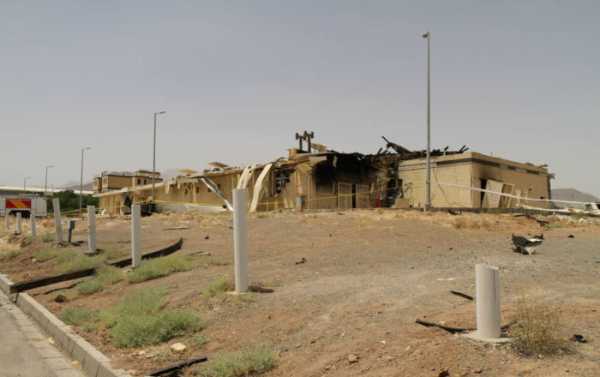
Amid ongoing tensions between Washington and Tehran over the latter’s nuclear program, a series of blasts have occurred in Iran near Tehran’s Parchin military complex, at the Natanz Fuel Enrichment Plant (FEP) and a power plant in Ahvaz, with reports claiming that Iranian officials regard the incidents as “sabotage”.
A large explosion at the Sepahan Boresh factory in the city of Baqershahr near Tehran on Monday night left at least two people dead and three injured, according to Iranian and foreign reports cited by The Jerusalem Post. The blast was reportedly heard by residents of areas south of Tehran and in the Kahrizak area.
The incident was caused by “negligence in filling oxygen tanks,” according to the Kahrizak district governor, cited by Radio Free Europe/Radio Liberty on Tuesday.
Saipa Press company, situated nearby, suffered damage to its walls in the blast state media reports.
According to the IntelliTimes intelligence blog, the Sepahan Boresh factory belongs to the Iranian automotive manufacturer SAIPA, which reportedly has links with the Iranian Ministry of Defense and the Iranian Revolutionary Guards Corps.
The site of the blast is claimed by The Jerusalem Post to be not far from the warehouse in the Shurabad commercial area where Israel’s intelligence agency had ostensibly found Iran’s nuclear archive in 2018.
Prime Minister Benjamin Netanyahu had insisted at the time that nuclear equipment and material was stored there, with the International Atomic Energy Agency subsequently discovering traces of uranium at the warehouse in 2019 and launching an investigation into their origin, according to Reuters.

In this Jan. 13, 2015, file photo released by the Iranian President’s Office, President Hassan Rouhani visits the Bushehr nuclear power plant just outside of Bushehr, Iran.
The current blast is the latest in a spate of explosions and fires reported at infrastructure sites across Iran.
On 26 June an explosion was reported at a gas storage facility located about 30 kilometres (18 miles) from Tehran, with Iranian authorities saying the incident was a result of “leaking gas tanks” amid reports of satellite photographs suggesting the blast occurred at a nearby missile production facility.
Iranian media refuted the speculations, saying the incident happened in a “public area” in Parchin.
A few days later, on 30 June, 19 people were killed in another explosion, which occurred at a medical facility in Tehran.
Initial reports also attributed the blast to an issue with the oxygen tanks.
A 2 July blast at the Natanz nuclear power plant, which remains Iran’s primary uranium processing facility, located 270 kilometres (155 miles) south of Tehran, significantly damaged the above-ground part of the building.
The incident sparked reports citing unnamed Iranian officials suggesting that Israel was behind the blast.
The New York Times reported, citing an unnamed source described as a Middle East intelligence official, that Israel was responsible for the explosion at Iran’s Natanz nuclear site, by means of a “powerful bomb”, adding, however, that the incident was not connected with other explosions that took place in Iran earlier, in particular a blast near Tehran’s Parchin military complex.

Centrifuge machines in Natanz uranium enrichment facility
The developments come against the backdrop of simmering Iran-US tensions ever since the Trump administration unilaterally withdrew from the 2015 Joint Comprehensive Plan of Action (JCPOA) commonly known as the Iran nuclear deal on 8 May 2018, claiming Tehran was in violation of its commitments.
The US subsequently reimposed tough sanctions against Iran’s banking and energy sectors.
A year later, Tehran announced that it had suspended some of its obligations under the JCPOA.
Iran has consistently stated that it does not aim to develop a nuclear weapon, outlining that the goals of the country’s nuclear program are exclusively peaceful.
Sourse: sputniknews.com
0.00 (0%) 0 votes


































